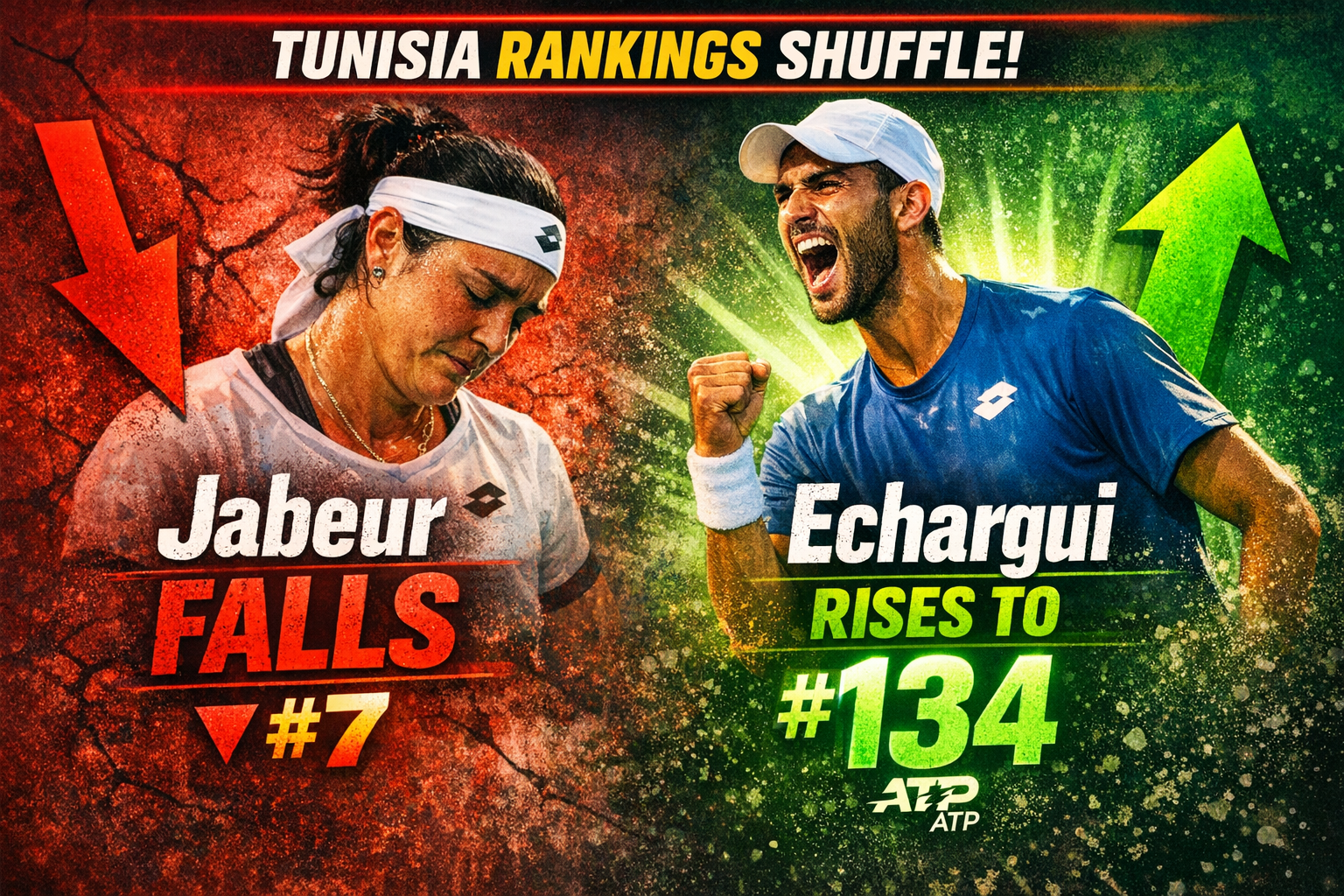-
Kyrgios Vs. Sabalenka: Dubai’s Battle Of The Sexes Falls Flat
A high-profile exhibition in Dubai promised spectacle but produced glitches, odd theatrics and a one-sided result that left questions about the value of these cross-gender…
-
Ronaldo Says He And Djokovic Have A Similar Story: Why That Matters
Cristiano Ronaldo presented Novak Djokovic with the Globe Sports Award in Dubai and compared their careers, praising Djokovic’s longevity and example-setting. Djokovic answered retirement questions…
-
Tunisia Rankings Shuffle: Jabeur Falls, Echargui Rises To No. 134
The December rankings nudged Tunisia’s order: Ons Jabeur slipped back while Moez Echargui surged to become the top Tunisian man at a new career high…
-
Photos: Alcaraz’s Murcia Grind Signals Big 2026 Ambitions
A day in Murcia gave a peek at Carlos Alcaraz’s offseason routine after a monster 2025, with new coach Samu López watching and clear focus…
-
Kyrgios Downs Sabalenka 6-3, 6-3 In Dubai Exhibition
Nick Kyrgios beat Aryna Sabalenka in straight sets in a Dubai exhibition billed as a playful ‘Battle of the Sexes’, leaving fans entertained and reminding…
As tennis players, we are all unique and particular, and we want our tennis gear and equipment to be exactly how we want it. That’s why we review the greatest tennis gear and equipment from prominent companies like Babolat, Wilson, Head, Prince, Yonex, Dunlop, Tecnifibre and much more!
We have extensively researched all products, give you our unique view as tennis players, and bring the results into one spot so you can compare and choose which gear is best for you. Select the most relevant criteria from the list below, and you will be directed to the category of your choice.
Rackets By Skill Level
We have compiled a list of tennis racket reviews to assist you in selecting the best tennis racket for your game and skill level. To help you find the perfect tennis racket, we’ve broken them up by ability level below. Choose your ability level below and get started.
Custom Rackets
Whatever level of tennis you play, using the right kind of racket can have a significant impact on your performance. Most custom rackets are hand-assembled to meet your exact specifications for playing your best tennis ever.
If you know what specifications you require, don’t hesitate to contact our custom racket manufacturer partner by clicking the link below. If you need assistance or more information, their team will answer all of your questions and help you find the best racket for you.
On-Court Gear & Apparel
We have compiled a list of the best tennis shoes, bags, sunglasses, elbow braces and tennis apparel from the top tennis and athletic companies listed below. We spend numerous hours researching and reviewing every product. Get ready to hit the courts!
On-Court Equipment
Whether you’re looking for ball machines, balls, hoppers, strings, stringing machines, training aids, or overgrips, we reviewed everything you should ever need to play like a pro!





